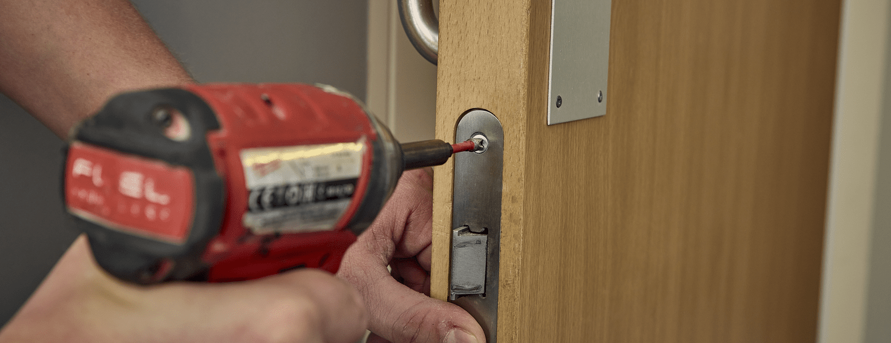Fire doors serve as a critical component in building safety by providing a barrier that slows the spread of fire and smoke. This crucial function allows for extended evacuation time for occupants and helps to safeguard escape routes.
What is a Fire Door?
A fire door is a specially designed and constructed door that provides resistance to fire and smoke, preventing or delaying the spread within a building. It is an integral part of a building's fire protection system, helping to compartmentalise and contain fires in specified areas, thereby protecting escape routes and allowing occupants more time to evacuate safely.
Fire doors are rated by their ability to withstand fire for a certain period, typically ranging from 30 minutes to 2 hours (FD30, FD60, etc.), and must adhere to strict installation and maintenance standards to ensure their effectiveness in a fire situation.
Following the Regulatory Reform (Fire Safety) Order in 2005, property owners are now required by law to fit all premises (other than private homes) with appropriate fire doors.
What does a fire door need to have?
Fire Door Ratings
Fire door ratings indicate the duration for which a door can withstand fire without failing. These ratings are crucial for ensuring the safety and compliance of buildings in the event of a fire. Ratings are typically expressed in minutes and demonstrate the fire resistance capacity of the door. Common fire door ratings include:
- FD30: The door can resist fire for 30 minutes.
- FD60: The door can resist fire for 60 minutes.
- FD90: The door can resist fire for 90 minutes.
- FD120: The door can resist fire for 120 minutes.
- FD30s/FD60s: the 's' after FD30 or FD60 signifies that the door is not only fire resistant, but also able to stop the spread of cold smoke.
Intumescent Strips
Intumescent strips are a critical component for fire doors, designed to expand when exposed to high temperatures. This expansion seals the gaps between the door and its frame, preventing the passage of fire and smoke.
Smoke Seals
Smoke seals are essential components of fire doors, designed to prevent the passage of smoke through gaps around the door edges and frame. Smoke seals are specifically engineered to block smoke, which can be just as dangerous as fire itself. They are made from materials that remain resilient to smoke penetration at room temperature.
Self-Closing Devices
Self-closing devices on fire doors are vital safety mechanisms that automatically close the door in the event of a fire, ensuring the door is not inadvertently left open and can perform its function of preventing the spread of fire and smoke. These devices are designed to be reliable and responsive, activating under specific conditions such as the detection of smoke or heat, or even upon the activation of a building's fire alarm system.
Regular Inspection and Maintenance
To ensure their effectiveness, fire doors require regular checks and maintenance to address any damages or wear that might compromise their integrity.
Compliance
We are committed to ensuring full building compliance. All of our fire door works are certified through third party accreditation under IFC or BM TRADA Q-Mark Fire Door Installation/Maintenance scheme.
Contact Fusion Services About Fire Door Installation Today!
If you’re looking for professional fire door installation and/or maintenance, or would like more information on any of our passive fire protection services, please get in touch today.

